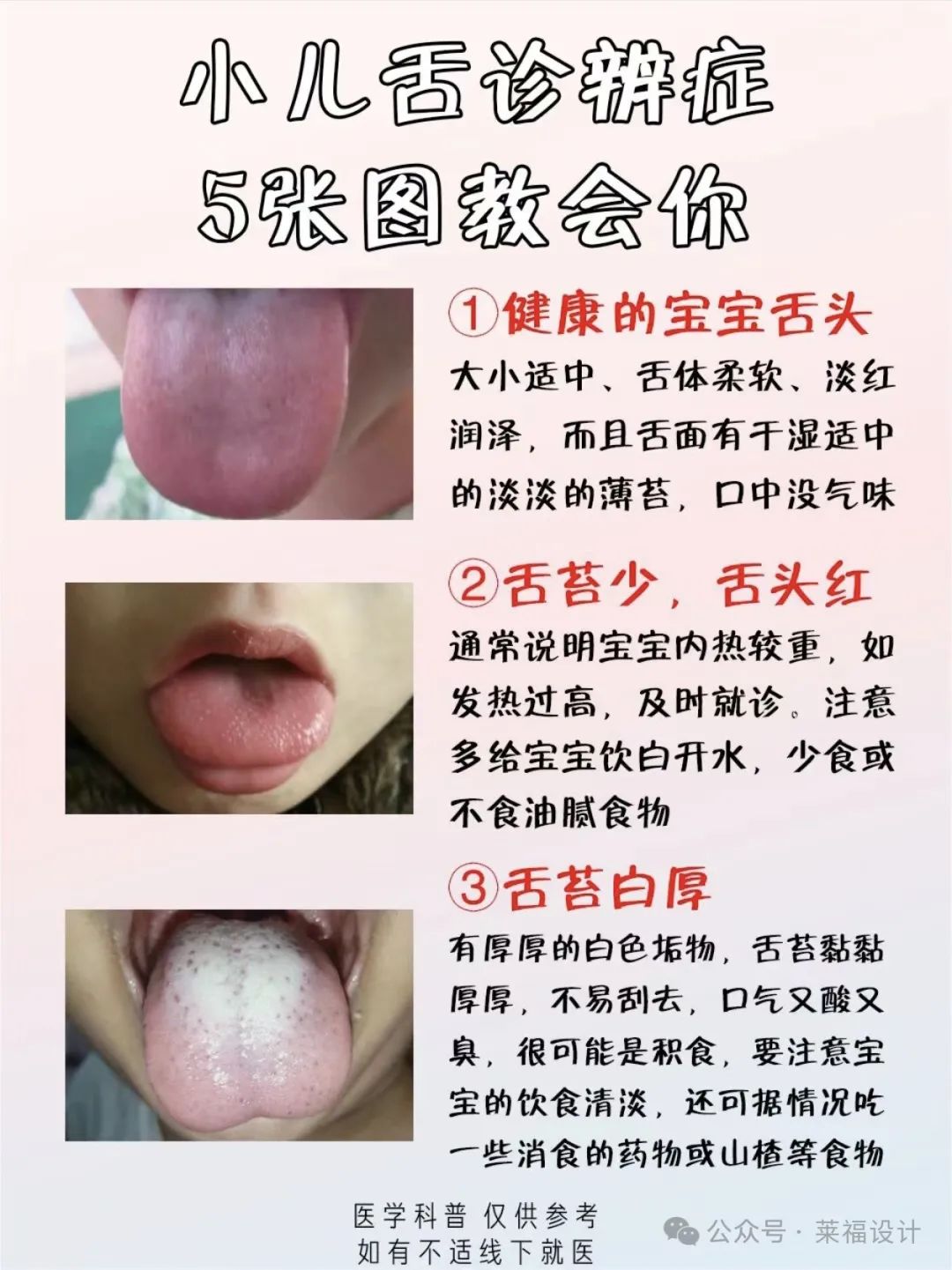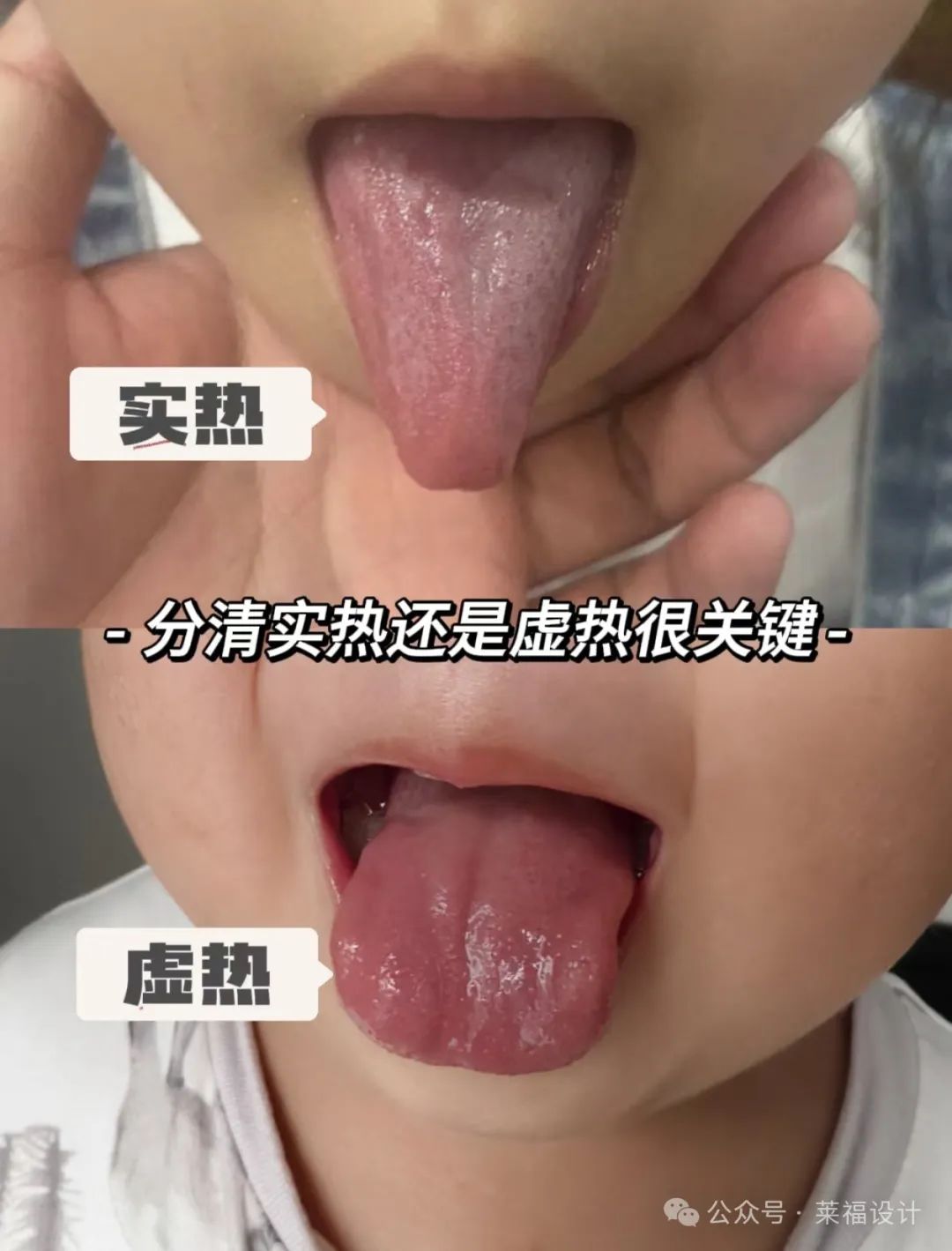Analyzing the tongue coating of young children for signs of spleen and stomach accumulated heat can be approached from the following aspects:

Color of the Tongue Coating
– Normal Condition: A healthy child’s tongue coating is generally thin and white, clean, moist, not thick or greasy.
– Signs of Accumulated Heat: If the child’s tongue coating appears yellow, it often indicates the presence of heat, possibly due to the transformation of accumulated food into heat in the spleen and stomach. The deeper the yellow color, the heavier the heat pathogen.
Thickness of the Tongue Coating

– Normal Condition: A normal tongue coating is relatively thin, allowing the tongue body to be seen through the coating.
– Signs of Accumulated Heat: When a child has accumulated food in the spleen and stomach, the tongue coating becomes thicker, presenting a layer of thick coating as if something is piled on the tongue surface. This is due to the dysfunction of the spleen and stomach in transforming and transporting food, leading to stagnation of food and turbid qi rising to the tongue surface.
Moisture of the Tongue Coating
– Normal Condition: A normal tongue coating is moist, with a moderate level of dryness and wetness.
– Signs of Accumulated Heat: If the child’s tongue coating is dry, even showing cracks, it indicates internal heat, where the body fluids are consumed by the heat pathogen and cannot rise to the tongue surface. This is also a manifestation of accumulated heat in the spleen and stomach.
Shape of the Tongue Body
– Normal Condition: A normal tongue body is of moderate size, soft, flexible, and pale red in color.
– Signs of Accumulated Heat: Some children with accumulated heat may have a swollen tongue body with teeth marks on the edges. This is due to spleen deficiency failing to transform and transport dampness, leading to accumulation of dampness in the body, causing the tongue body to swell and resulting in teeth marks from pressure. Additionally, the tongue body may appear red, especially at the tip and edges, indicating excess heat in the heart and liver, which often suggests a mutual influence with accumulated heat in the spleen and stomach.

Analyzing the tongue coating to assess a child’s spleen and stomach accumulated heat is only a preliminary judgment. It is necessary to combine this with other symptoms such as appetite, bowel movements, sleep, and breath to make a comprehensive assessment. If signs of accumulated heat are observed, dietary adjustments should be made promptly, and medical assistance should be sought if necessary.



